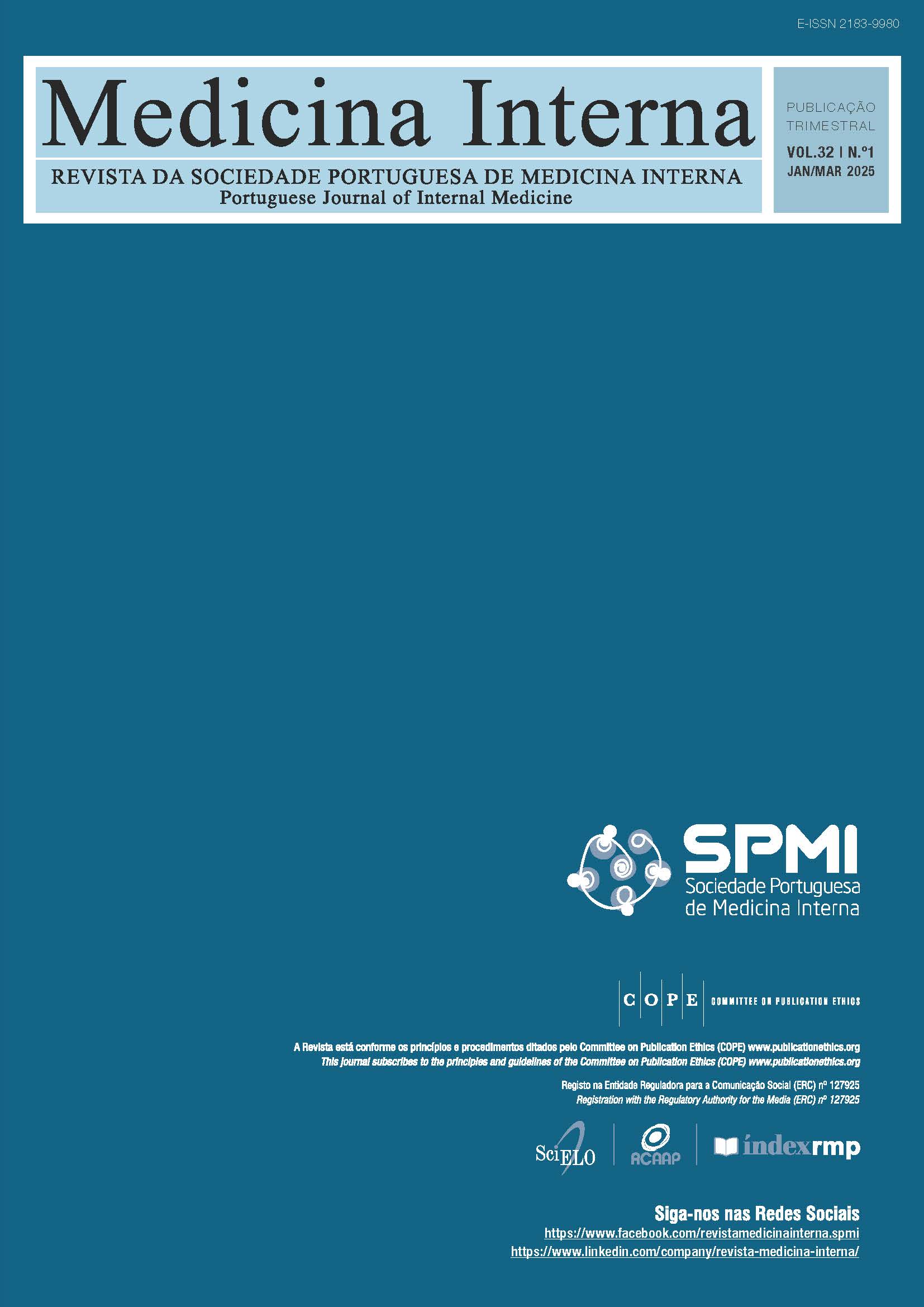Comportamento do Utilizador do Serviço de Urgência do Hospital da Horta-Açores
DOI:
https://doi.org/10.24950/rspmi.2582Keywords:
Açores, Inquéritos e Questionários, Mau Uso de Serviços de Saúde/estatísticas e dados numéricos, Serviço de Urgência Hospitalar/estatística e dados numéricosAbstract
Introdução: O uso inapropriado dos serviços de urgência,
com todas as consequências negativas para os sistemas de
saúde, é um fenómeno generalizado multifactorial e com tendência crescente.
Métodos: Para conhecer a nossa realidade fizemos um estudo do comportamento do utilizador do serviço de urgência do Hospital da Horta através de um inquérito, tendo sido analisados 463 casos, representando 6,5% de todos os episódios do período de estudo, dos quais 44% eram do género masculino e 56% feminino e dois terços dos quais tinham idades entre 24 e os 66 anos.
Resultados: Com base na triagem de Manchester 60% dos inquiridos foram classificados não urgentes (Verdes, Azuis
e Brancos). Apenas 5% tinha contactado a linha Saúde24 e só 12% tentou consulta no médico de família.
Conclusão: Os motivos principais pela opção hospitalar foram a auto percepção de urgência clínica, a busca na celeridade do Serviço de Urgência para resolução do problema, o menor tempo de espera no atendimento, a maior probabilidade de acesso a um especialista hospitalar e/ou a exames diagnósticos e a uma expectativa de maior qualidade no serviço prestado.
Downloads
References
OECD. Health at a Glance 2023: OECD Indicators. https://www. oecd-ilibrary.org/sites/0de600bb-en/index.html?itemId=/content/
component/0de600bb-en
Di Somma S, Paladino L, Vaughan L, Lalle I, Magrini L, Magnanti M. Overcrowding in emergency department: an international issue. Intern Emerg Med. 2015; 10: 171-5. doi: 10.1007/s11739-014-1154-8
Coster JE, Turner JK, Bradbury D, Cantrell A. Why do people choose emergency and urgent care services? A rapid review utilizing a systematic literature search and narrative synthesis. Acad Emerg Med. 2017; 24: 1137-49. doi: 10.1111/acem.13220
Kua PHJ, Wu L, Ong E-LT, Lim ZY, Yiew JL, Thia XH, et al. Understanding decisions leading to nonurgent visits to the paediatric emergency department: caregivers’ perspectives. Singapore Med J. 2016; 57: 314-19. doi: 10.11622/smedj.2016023
Cremonesi P, Bella E, Montefiori M, Persico L. The Robustness and Effectiveness of the Triage System at Times of Overcrowding and the Extra Costs due to Inappropriate Use of Emergency Departments. Appl Health Econ Health Policy. 2015; 13: 507-14. doi: 10.1007/s40258-015-0166-5
Van den Heede K, Van de Voorde C. Interventions to reduce emergency department utilisation: a review of reviews. Health Policy. 2016; 120: 1337-49. doi: 10.1016/j.healthpol.2016.10.002
Carret ML, Fassa AC, Domingues MR. Prevalência e fatores associados ao uso inadequado do serviço de emergência: uma revisão sistemática da literatura. Cad Saúde Pública. 2009; 25: 7-28. doi: 10.1590/S0102-311X2009000100002
Lee A, Lau FL, Hazlett CB, Kam CW, Wong P, Wong TW, et al. Factors associated with non-urgent utilization of Accident and Emergency services: a case-control study in Hong Kong. Soc Sci Med. 2000; 51: 1075-85. doi: 10.1016/S0277-9536(00)00039-3
Rajpar SF, Smith MA, Cooke MW. Study of choice between accident and emergency departments and general practice centres for out of hours primary care problems. J Accid Emerg Med. 2000; 17: 18-21. doi: 10.1136/emj.17.1.18
Lowthian JA, Jolley DJ, Curtis AJ, Currell A, Cameron PA, Stoelwinder JU. The challenges of population ageing: accelerating demand for emergency ambulance services by older patients, 1995-2015. Med J Aust. 2011; 194: 574-8. doi: 10.5694/j.1326-5377.2011.tb03107.x
Oktay C, Cete Y, Eray O, Pekdemir M, Gunerli A. Appropriateness of emergency department visits in a Turkish university hospital. Croat Med J. 2003; 44: 585-91. PMID: 14515418
Stein AT, Harzheim E, Costa M, Busnello E, Rodrigues LC. The relevance of continuity of care: a solution for the chaos in the emergency services. Fam Pract. 2002; 19: 207-10. doi: 10.1093/fampra/19.2.207
OECD. Health at a Glance. European report 2016. doi: 10.1787/23056088
Campbell JL, Ramsay J, Green J, Harvey K. Forty-eight hour access to primary care: practice factors predicting patients' perceptions. Fam Pract. 2005; 22: 266-8. doi:10.1093/fampra/cmi006
Shah NM, Shah MA, Behbehani J. Predictors of non-urgent utilization of hospital emergency services in Kuwait. Soc Sci Med. 1996; 42: 1313-23. doi: 10.1016/0277-9536(95)00233-2
Lacatus AM, Atudorei IA, Neculau AE, Isop LM, Vecerdi CA, Rogozea L, et al. Inappropriate Use of Emergency Services from the Perspective of Primary Care Underutilization in a Local Romanian Context: A Cross-Sectional Study. Healthcare. 2024; 12: 1-10. doi: 10.3390/healthcare12070794
Sempere-Selva T, Peiró S, Sendra-Pina P, Martinez-Espin C, Lopez-Aguilera I. Inappropriate use of an accident and emergency department: magnitude, associated factors, and reasons: an approach with explicit criteria. Ann Emerg Med. 2001; 37: 568-79. doi: 10.1067/mem.2001.113464
Brazão ML, Nóbrega S, Bebiano G, Carvalho E. Atividade dos Serviços de Urgência Hospitalares. Medicina Interna. 2016; 23: 8-14. doi:
24950/rspmi.814
Miyazawa A, Maeno T, Shaku F, Tsutsumi M, Kurihara H, Takayashiki A, et al. Inappropriate use of the emergency department for nonurgent conditions: Patient characteristics and associated factors at a Japanese hospital. J Gen Fam Med. 2019; 20: 146-53. doi: 10.1002/jgf2.249
Naouri D, Ranchon G, Vuagnat A, Schmidt J, El Khoury C, Yordanov Y, et al. Factors associated with inappropriate use of emergency departments: findings from a cross-sectional national study in France. BMJ Qual Saf. 2020; 29: 449-64. doi: 10.1136/bmjqs-2019-009396
Rego PM. A utilização dos serviços de urgência em Unidades Locais de Saúde. [Dissertação no XLVI CURSO de especialização em Administração Hospitalar]. Lisboa: Escola Nacional de Saúde Púbica; 2018. [consultado Dez 2023] Disponível em: https://run.unl.pt/bitstream/10362/75722/1/RUN%20%20Trabalho%20Final%20CEAH%20%20Patr%C3%ADcia%20Maria%20Nunes%20Rego.pdf
Lee A, Lau FL, Hazlett CB, Kam CW, Wong P, Wong TW, et al. Factors associated with non-urgent utilization of Accident and Emergency services: a case-control study in Hong Kong. Soc Sci Med. 2000; 51: 1075-85. doi: 10.1016/S0277-9536(00)00039-3
Rajpar SF, Smith MA, Cooke MW. Study of choice between accident and emergency departments and general practice centres for out of hours primary care problems. J Accid Emerg Med. 2000; 17: 18-21. doi: 10.1136/emj.17.1.18
Almeida CP. A implementação da triagem telefónica como uma prática Lean num serviço de atendimento não programado. [Tese de Mestrado]. Lisboa: ISCTE; 2011. [consultado Dez 2023] Disponível em: https://repositorio.iscte-iul.pt/handle/10071/4182
Sarver JH, Cydulka RK, Baker DW. Usual source of care and nonurgent emergency department use. Acad Emerg Med. 2002; 9: 916-23. doi: 10.1197/aemj.9.9.916
Lobachova L, Brown D, Sinclair J, Chang Y, Thielker K, Nagurney J. Patient and provider perceptions of why patients seek care in emergency departments. J Emerg Med. 2014; 46: 104-12. doi: 10.1016/j.jemermed.2013.04.063
Downloads
Published
How to Cite
Issue
Section
Categories
License
Copyright (c) 2025 Internal Medicine

This work is licensed under a Creative Commons Attribution 4.0 International License.
Copyright (c) 2023 Medicina Interna






